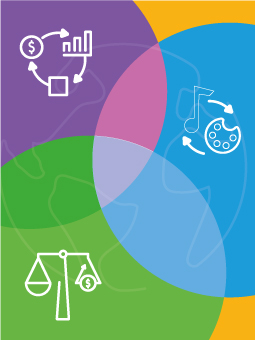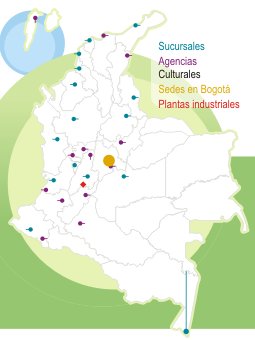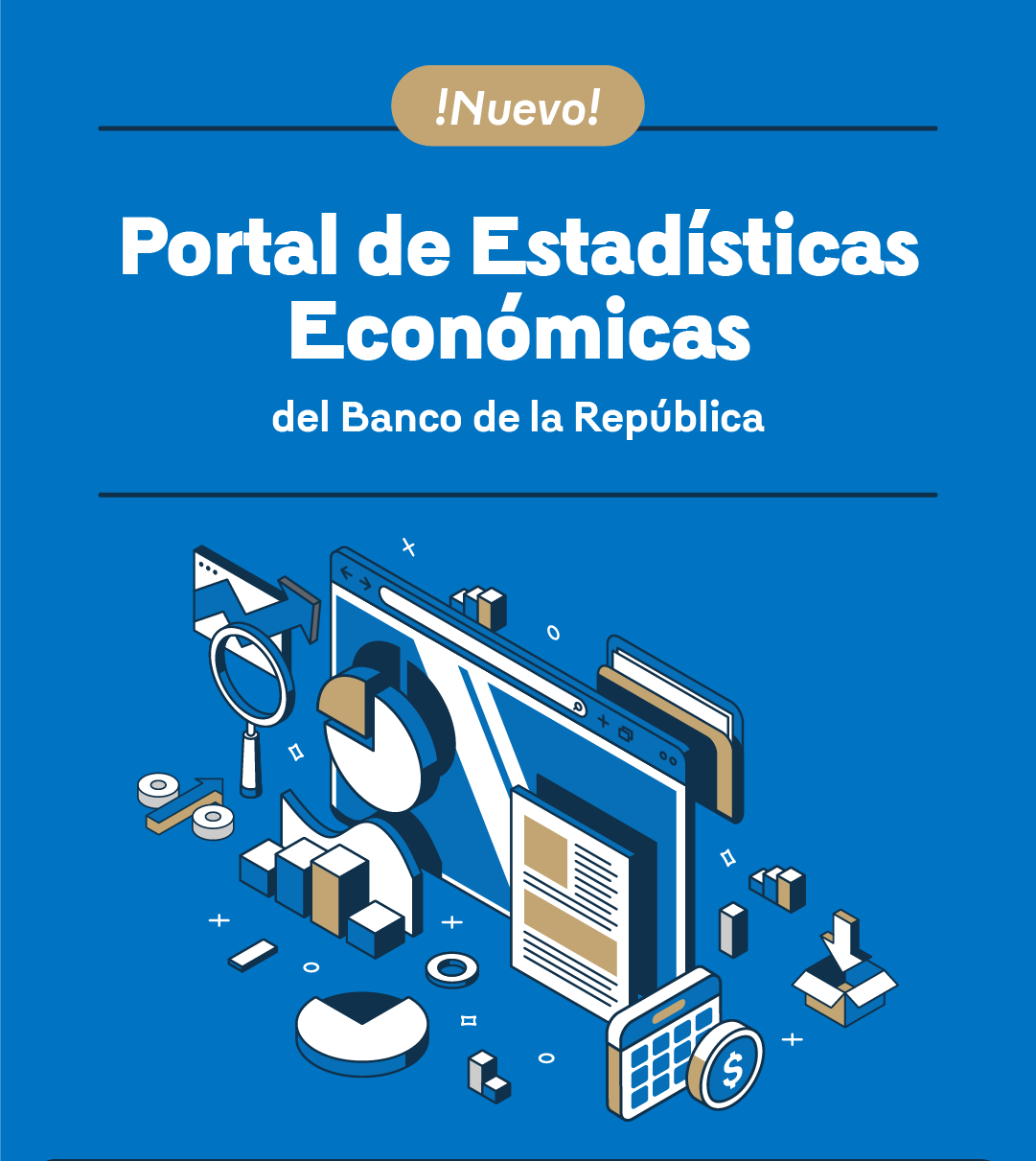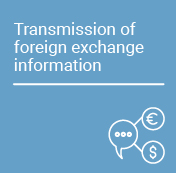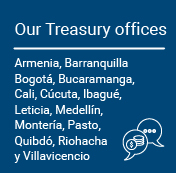Financial Markets Report - Fourth Quarter 2024
The main purpose of these documents is to provide quarterly information on financial markets. Opinions and possible errors are the sole responsibility of the author and their contents do not compromise the Board of Directors of Banco de la República (the Central Bank of Colombia, Banrep).
During the fourth quarter of 2024 (4Q24), global economic activity continued to exhibit the resilience observed in recent years, although with some differences among major economies. Inflation rebounded and closed the year above the targets set by central banks, in contrast to the downward trend recorded during most of the year. In this scenario, most central banks remained cautious about their decisions to cut interest rates, a policy initiated during the year. As a result, monetary policy expectations increased for most of these banks, which affected the performance of sovereign bonds and currencies in the region, including Colombia, which depreciated over the quarter, following the trend observed throughout the year.
Global economy proved resilient during the period analyzed, although with some differences among major economies.
- Inflation rebounded during the quarter and closed the year above the main central banks’ targets, contrary to the performance observed during most of the year, during which the downward trend recorded since 2022 continued, although at a more moderate pace.
- Most of these banks remained cautious regarding their interest-rate cut decisions, a policy initiated during the year.
- Expectations regarding monetary policy rate levels for most of these banks increased, which contributed to tighter financial conditions in the United States, completely reversing the favorable performance recorded for most of the year.
- Similarly, financial conditions tightened in the United Kingdom during the quarter, while the easing trend observed for most of the year continued in the Eurozone and Japan.
International uncertainty remained high during 4Q24, primarily influenced by changes in the monetary policy outlook and the US election outcome and its potential implications on the global fiscal, immigration, and trade outlook.
- Throughout the year, geopolitical conflicts intensified, elections were held in several developed and emerging economies, and uncertainty remained regarding the economic outlook for China and Europe. These factors were accompanied by a significant unwind of carry trade positions by international investors in 3Q24.
- Despite this environment, emerging economies continued to record net inflows of foreign portfolio investment, extending the trend observed for most of the year.
- Additionally, in an environment marked by geopolitical uncertainty stemming from tensions in the Middle East, oil prices recorded an increase during the fourth quarter of 2024. This increase was driven by higher demand in the United States attributable to colder weather conditions, as well as the impact of sanctions imposed on Russian oil producers and supply routes, adding additional pressures to the global energy market.
Locally, inflation expectations embedded in financial markets exhibited a downward trend throughout 2024. However, they rebounded during 4Q24, closing the year above the 3.0% target set by the Board of Directors of Banco de la República (the Central Bank of Colombia - BDBR).
- During the quarter, inflation expectations in Colombia increased due to several factors, such as increased fiscal uncertainty, persistent core inflation, exchange rate depreciation, expected adjustments in the price of ACPM (diesel fuel), fluctuations in global commodity prices, and the adjustment of the minimum wage that will take effect in 2025.
- In this context, the BDBR cut the monetary policy rate (MPR) by 75 basis points (bp), bringing it to 9.5% at the end of 4Q24, accumulating a 350 bp reduction during 2024.
- Markets continue to anticipate future MPR cuts, although at a more moderate pace compared to expectations at the beginning of 2024.
- In Latin America, inflation exhibited mixed performance during the last quarter of the year. By the end of 2024, most countries in the region remained above the inflation targets set by their central banks. In line with the international environment, most central banks in the region continued with interest rate cuts in 4Q24, except for Brazil.
During 4Q24, Colombian public debt devalued more than its peers, except for Brazil. The devaluations of local public debt reflected the persistence of fiscal risks, a trend that prevailed throughout the year.
- Colombian public debt devalued more than most other countries’ debt in the region amid persistent fiscal risks. The exception was Brazil's debt, which devalued more than Colombia’s, reflecting the country’s situation characterized by the generalized deterioration in its financial assets towards the end of 4Q24.
- During 4Q24, foreign investors in the local public bond market maintained their selling trend in Colombian Treasury bonds (TES) observed since 3Q24, closing the year as net sellers.
- In the same period, local pension funds maintained their buying stance, reaching record highs in their position, and consolidating themselves as the main buyers of TES in 2024.
- In contrast to the trend observed in the region, the Colombian stock market showed a favorable performance during the last quarter of 2024. However, this market continues to be characterized by limited liquidity levels and a small number of participants.
The US dollar strengthened during 4Q24 vis-a-vis most currencies of developed and emerging countries, driven by expectations of a more gradual MPR cut cycle in the United States, a trend that continued throughout 2024.
- In Latin America, most of the reference currencies depreciated, with the Brazilian real standing out in a context of high political and fiscal uncertainty. In Brazil, the Central Bank intervened significantly in the foreign exchange market towards the end of the year.
- During 4Q24, the Colombian peso (COP) weakened, reaching its highest level of the year against the US dollar, due to external factors and concerns related to the country’s fiscal situation. This depreciation of the Colombian peso was consistent with that of most emerging and regional currencies throughout 2024.
- The volatility of the Colombian peso decreased during the quarter, although liquidity conditions deteriorated compared to the previous quarter.
- As part of the Foreign Reserves Accumulation Program announced in December 2023, Banco de la República acquired USD 1,479.4 million during the year. As a result of the program and the returns on foreign reserves, indicators related to the adequate level of reserves stand at appropriate values, without being excessive, to meet the country’s external needs and provide solid support against potential external shocks.
In the Colombian money market, in 2024, Banco de la República adopted several measures to ensure adequate liquidity flows in the system, preventing significant deviations of the overnight Reference Banking Indicator (IBR in Spanish) regarding the MPR.
- Throughout the year, the levels of deposits by the General Directorate of Public Credit and National Treasury of the Ministry of Finance (DGCPTN in Spanish) at Banco de la República were lower than their historical average, with greater volatility of such deposits.
- In 2024, there was significant demand for Banco de la República’s monetary contraction instruments, accompanied by significant demand for temporary expansionary operations.
- The IBR Committee adjusted the quotation scheme, both in the amounts traded and in the quotation schedule, to strengthen the representativeness of the indicator as the benchmark rate for money prices at different maturities. In addition, in 3Q24, the BDBR decided to reduce the reserve requirement for credit institutions to contribute to the financial deepening of the economy and to adapt this tool to the inflation Banco de la República’s targeting scheme.
- The liquidity supply and contraction operations were complemented with TES purchases.
Index of Boxes in the Report
Box 1: Assessing the Forecasting Ability of Inflation Expectations in Colombia (only in Spanish)






